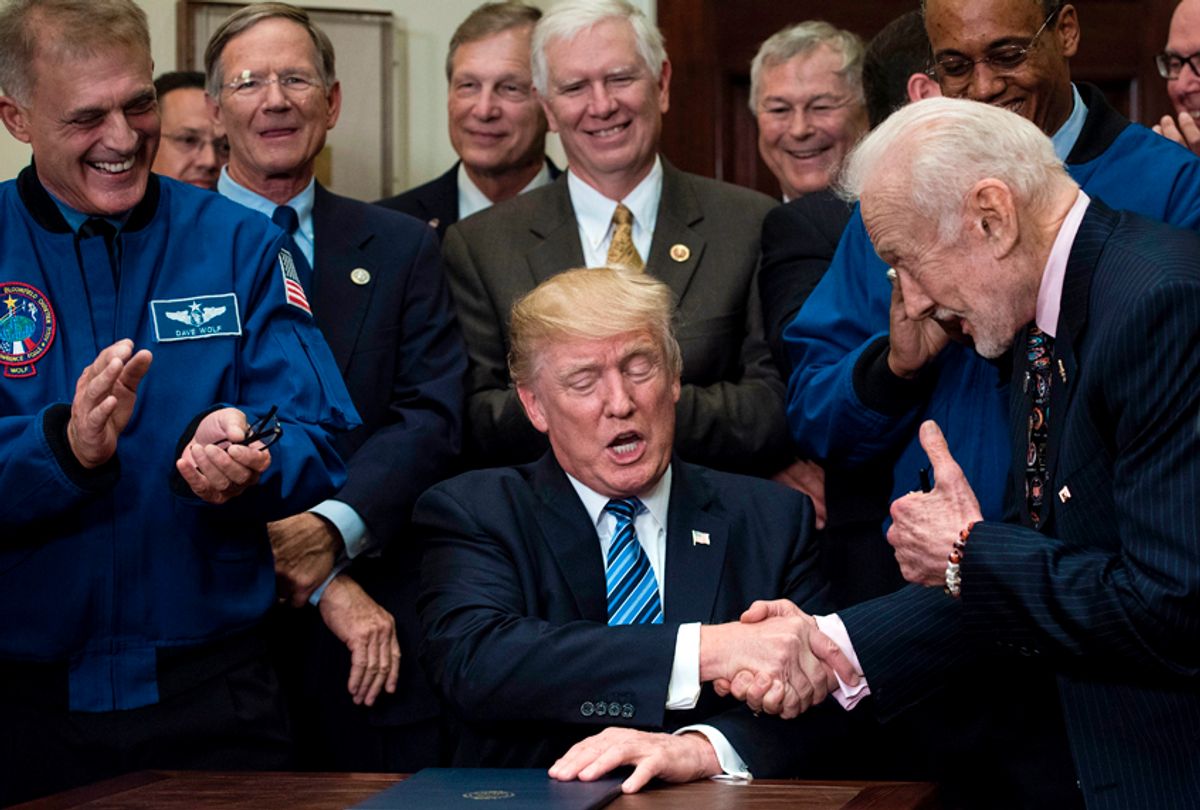One small step for Trump, one giant leap towards Earth’s catastrophic demise.
President Donald Trump announced on Monday that America will once again “reach for the moon.” According to a White House press release, Trump signed a space policy directive enabling NASA to “pursue extraterrestrial exploration,” meaning Mars and moon missions. This newfound focus doesn’t come without a sacrifice though, one that wasn’t clearly noted in the administration’s press release.
According to the proposed 2018 federal budget, which explains in more detail Trump’s vision for NASA’s priorities in 2018, four climate-change focused missions could be eliminated in lieu of the new direction: the Plankton, Aerosol, Cloud, Ocean Ecosystem satellite (PACE); the Orbiting Carbon Observatory-3 experiment (OCO-3); the Climate Absolute Radiance and Refractivity Observatory (CLARREO) Pathfinder; and the Deep Space Climate Observatory (DSCOVR).
PACE is a mission that was designed to reveal unprecedented data about the interactions between the ocean and the atmosphere — for example, how they exchange carbon dioxide. This information is crucial in the fight to understand and prevent climate change, since humans are predicted to near or exceed dangerous levels of carbon dioxide within 100 years. The mission OCO-3 would take precise measurements of Earth's carbon dioxide levels from space, more precise than any previous measurements. CLARREO is a mission that will send a reflected solar spectrometer into space, a device that will be used to “monitor the pulse of the Earth” and give scientists a better understanding of climate change. And DSCOVR is a joint mission between NASA and the National Oceanic and Atmospheric Administration, which would warn NASA of geomagnetic storms which can sometimes disrupt communications on Earth.
According to the administration, the proposed budget “focuses the Nation’s efforts on deep space exploration rather than Earth-centric research, and develops technologies that would help achieve U.S. space goals and benefit the economy.”
The said space goals are unclear though, and the press release only offers the explanation that it would require American astronauts to return to the moon because it’s “of interest to international partners and is within reach of America’s private space industry.”
The U.S. first visited the moon in a manned mission in 1969. Since then, there have been six manned missions and landings, the last one being in 1972. The numerous moon missions that followed brought robots, not humans. Unmanned missions tend to reap as much (or more) science than manned missions, and at a fraction of the cost of manned missions, which are much more technically complicated.
It’s unclear what Trump’s real motive is here. Could he be trying to increase business for the multi-billion companies like Lockheed Martin Space Operations, a NASA contractor? Or is his motive to stroke his own ego and leave a Trumpian legacy on the moon? Whatever the case, one thing is clear: Trump doesn’t care for or believe in climate change.



Shares